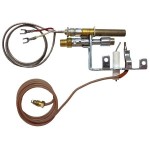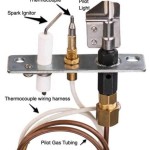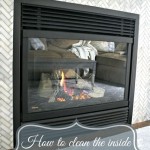Fireplace Cover-Ups: Protection, Style, and Functionality
Fireplaces add warmth, ambiance, and a touch of charm to any home. While they are appreciated for their aesthetic value and practicality, the surrounding area can become a focal point for dust, debris, and general clutter. A fireplace cover-up is an effective solution to address these issues, offering protection, style, and functionality to enhance the fireplace's overall appeal and maintain its cleanliness.
Protection and Preservation
Fireplace cover-ups provide a crucial layer of protection against the elements. During non-use periods, dust, dirt, and other airborne particles can accumulate in the fireplace opening, potentially damaging the interior and hindering its efficient operation. A sturdy cover-up acts as a barrier against these contaminants, ensuring that the fireplace remains clean and ready for use when needed. Additionally, cover-ups safeguard the fireplace from accidental spills or splashes, preventing damage to the surrounding area. This is particularly important in homes with young children or active pets who may be prone to accidents.
Style and Aesthetics
Fireplace cover-ups are no longer confined to simple, utilitarian designs. Modern manufacturers offer a wide range of styles and materials to complement any home décor. From traditional wood panels to sleek metal screens, there is a cover-up for every taste and budget. Some cover-ups feature intricate designs or decorative accents that enhance the fireplace's visual appeal. For those seeking a more personalized touch, custom-made cover-ups can be tailored to match specific interior design themes or existing furniture pieces. By incorporating a stylish fireplace cover-up, homeowners can seamlessly blend the fireplace into their surroundings, creating a harmonious and aesthetically pleasing atmosphere.
Functionality and Practicality
Fireplace cover-ups offer various functional benefits beyond protection and style. Many modern cover-ups integrate features that enhance their practicality. For instance, some models include a built-in storage compartment that can be used to hold logs, kindling, or other fireplace accessories. Others feature a convenient handle or latch system for easy opening and closing. Additionally, certain cover-ups incorporate ventilation systems that allow air circulation while still providing protection against dust and debris. By choosing a cover-up with these features, homeowners can maximize the fireplace's functionality and convenience.
Types of Fireplace Cover-Ups
The market offers a diverse selection of fireplace cover-ups to meet various needs and preferences. Some common types include:
- Fireplace Screens: These are typically metal frames with a mesh or wire design that allows for ventilation while preventing sparks and embers from escaping. They are available in a range of styles, from simple and minimalist to ornate and elaborate.
- Fireplace Doors: Fireplace doors are more substantial than screens and offer greater protection against dust and debris. They often feature glass panels that allow for viewing of the fire while ensuring safety. Some doors are equipped with locking mechanisms for enhanced security.
- Fireplace Shutters: Fireplace shutters are a popular alternative to screens or doors. They are made of wood or metal panels that slide open and closed to provide both protection and ventilation. Shutters are often designed to match the fireplace's existing mantelpiece or surrounding décor.
- Fireplace Covers: These are typically flat panels or covers that completely conceal the fireplace opening. They are available in various materials, including wood, metal, and stone. Fireplace covers are often used for a more minimalist or contemporary aesthetic.
Factors to Consider
When choosing a fireplace cover-up, several factors should be considered:
- Fireplace Size and Shape: Ensure that the cover-up is appropriately sized and shaped for the fireplace opening. If the cover-up is too small or too large, it may not fit properly or may not provide adequate protection.
- Material: Consider the material of the cover-up, taking into account durability, heat resistance, and aesthetics. Metal, wood, and stone are common materials used for fireplace cover-ups.
- Style and Design: Select a cover-up that complements the overall style of the room and the fireplace itself. Consider the existing décor, furniture, and color scheme when making your decision.
- Functionality: Determine the level of protection, ventilation, and storage requirements needed for the fireplace. Consider features such as built-in storage, latching mechanisms, or ventilation systems.
- Budget: Fireplace cover-ups vary widely in price, so it is important to establish a budget before shopping. Consider both initial cost and long-term value, taking into account the material, design, and features.

How I Created An Insulated Fireplace Cover With Pallet Wood Diy Doors

Coastal Coverup How To Make A Driftwood Diy Fireplace Cover Table And Hearth

Fireplace Cover Project Jimsprague Net Up Freestanding
:max_bytes(150000):strip_icc()/MadetobeaMommaAfter-5bb247914cedfd0026314d0c.jpg?strip=all)
Before And After Fireplace Makeovers

Diy Fireplace Cover Tutorial Ehow Build A
:max_bytes(150000):strip_icc()/MadetobeaMommaBefore-5bb2476446e0fb002607ad4f.jpg?strip=all)
Before And After Fireplace Makeovers

3 Easy Boarded Up Fireplace Ideas Direct Fireplaces

Fireplace Cover Crossbuck
Fireplace Screen Projects Phoenix Handcraft

Fireplace Makeover Part 2 Continued Rooms For Blog
Related Posts








